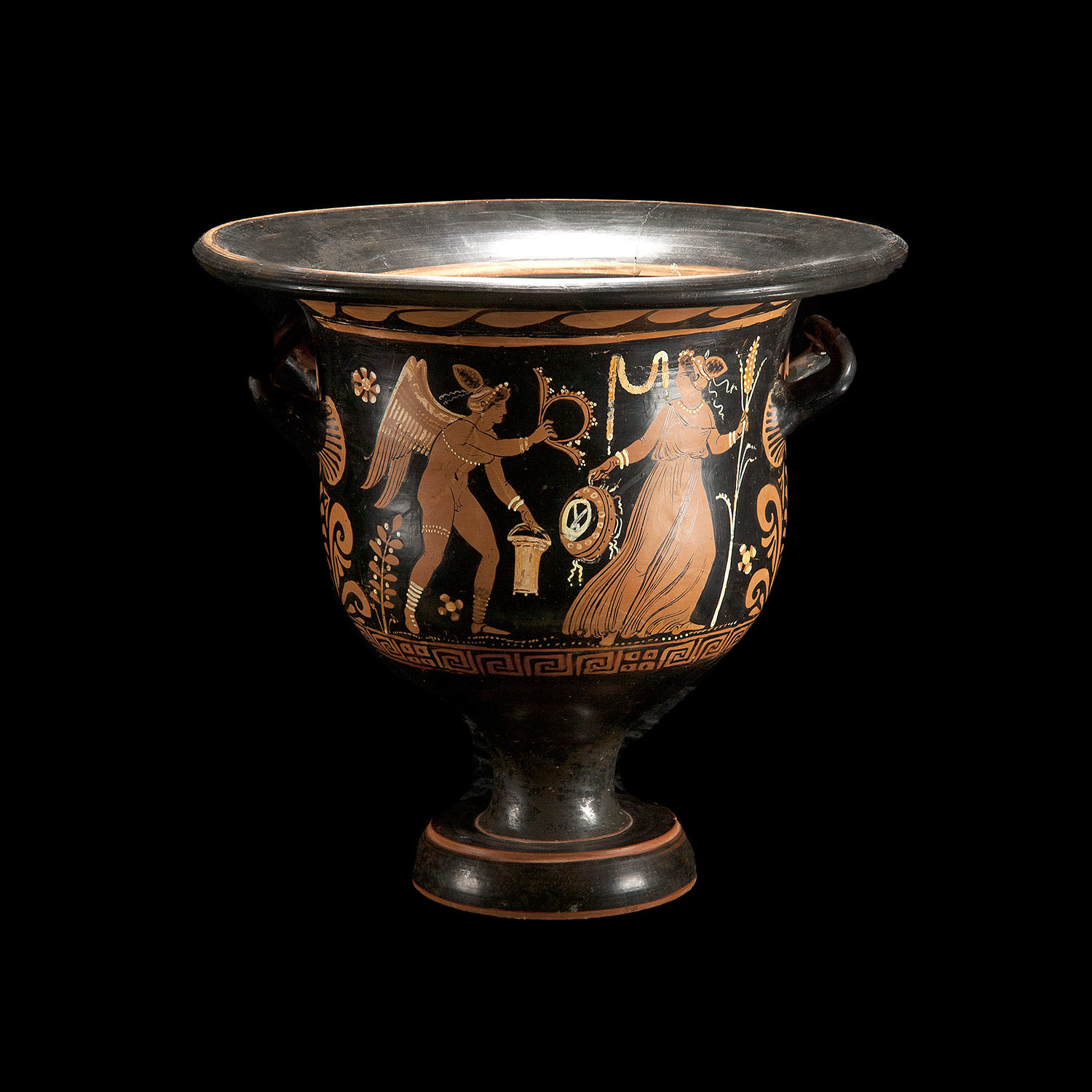THE RIDDLE OF THE VIRGINS
The parable of the virgins (Matthew 25:1–13), amazingly enough, follows the identical pattern of the Noah illustration and the goodman illustration. The double-reference interpretation fits snugly and comfortably, not only one way, or two ways, but in three ways.
Second question, who do the foolish virgins represent? The bridegroom says to them, "I know you not." So the foolish virgins must be unbelievers.
Now, into which category do the disciples fit? Not the foolish virgins. How about the wise virgins? Are the disciples like the wise virgins waiting to attend the wedding? Well, yes and no. The disciples will be at the wedding all right, but not as attendants. They are the bride! You and I are not virgins who attend the wedding, we are the bride at the wedding. If this parable were talking about the rapture of the bride, we might entitle it, "The Case of the Missing Bride."
Therefore, neither category fits the disciples perfectly, but the double-reference fits perfectly because it recognizes two groups of redeemed people.

The illustration of the virgins carries a different twist to it, because it dwells not so much on knowing or not knowing, but it emphasizes readiness or preparedness. Perhaps this is why it stands separate from Noah and the goodman instead of following immediately after them.
wise virgins
ready
attend wedding
foolish virgins
not ready
miss wedding
disciples
ready
bride at wedding
Some have said that the virgins represent the church because the church is called a "virgin" in 2 Corinthians 11:2. Others have said the virgins represent Israel because Israel is called a "virgin" in Jeremiah 18:13. But "virgin" in these verses is singular, not plural. Is the church ten virgins? Or are there ten Israels? No, rather than representing Israel or the church, the parable of the virgins depicts people in general living during the tribulation, saved and unsaved, Jew or Gentile. This interpretation avoids the oddity of the church being made up of multiple virgins, it allows the foolish virgins to be unsaved ("I know you not"), and it matches the illustrations of Noah and the goodman which depict the saved and the unsaved of the tribulation.
Viewing the bride and her attendants as two different groups harmonizes with common sense and with other Scripture. Just as we saw that a period of time following the rapture is to call out a righteous people to populate the millennium, so God has a period of time following the receiving of the bride in order to call out the bride's attendants. These are "the virgins her companions that follow her" (Psalms 45:14). The "friends of the bridegroom" are Old Testament saints (John 3:29). In this way the wedding is completely furnished—friends, bride, and attendants; none are missing, but all have their counterparts in real life as prophecy is fulfilled.
REMAINING QUESTIONS
We have surveyed the double-reference interpretation of the Olivet Discourse. More remains to be said, however, and several questions need to be answered. Let's handle the rest of the material in question and answer form.
Question: How Do I Separate the Double References? Does it all seem too fuzzy? Too blurred? Is the distinction between church saints and tribulation saints too hard to separate as you read through the passage? Then let me give you a practical hint that will help you to see it at a glance.
Take a pen and bracket Matthew 24:37–39 in your Bible. Beside the bracket write "tribulation illustration." Now bracket verse 42. (Verses 40–41 we will discuss later on.) Beside it write "church application." Also bracket verse 43 as "tribulation illustration and bracket verse 44 as "church application." Finally bracket 25:1–12 as "tribulation illustration" and bracket verse 13 as "church application."
Now you can see that it is not mixed up. It follows a pattern. Actually it is easier for you to distinguish the double references than it was for Old Testament saints to distinguish their double references. The reason for this we discussed in our chapter on 2 Thessalonians.
When Jesus gave a "tribulation illustration" and a "church application" He was simply doing what preacher do every Sunday when they preach. You've heard the preacher as he tells a story from the Bible and then he concludes with, "Now this is what it means for you." He's taking the ancient story and applying it to modern life. You in the pew have no trouble separating the story from the application.
Jesus did identically. He first told the story about Noah. From that story He made application to the disciples. He first told the parable of the goodman. From that He drew an application to the disciples. He first told the parable of the virgins. From that, application.
All the way through the two parts are clearly distinguished. You can separate the double references of the Olivet Discourse just as easily as you can separate the application from the preacher's story.
Question: How Does it Fit the Context? I share the concern of many to remain strictly within the context and to do nothing whatsoever to injure the time-setting of the Olivet Discourse. Matthew 24:29 says "after the tribulation." That time-setting governs the illustrations which follow. The illustrations of Noah, the goodman, and the virgins all fall into the context of "after the tribulation."
This being so, how can I get a church reference out of a post-tribulational context? Am I not reading something into the text that is not there?
The answer is simple. I see no church reference whatsoever in the illustrations of Noah, the goodman, and the virgins. These three illustrations remain strictly within the post-tribulational context. The references to the church come in the applications following the illustrations, and nothing is more natural than a preacher drawing such applications to his hearers.
Illustration of Noah
This primary reference preserves the tribulational context.
Application to church
This secondary reference preserves the unknown day.
In this way we fully satisfy the demands of the context. Nothing is wrenched out of place, twisted, or distorted, but it all fits naturally.
Let me go even further. The double-reference interpretation has a stronger view of the context than post-tribulationism does. Surprising? I'll show you why. Jesus says, "The flood came and took them all away." We allow this statement its full force. Just as all the flood victims were taken away, so all the wicked of the end times will be taken away. We allow the illustration full correspondence with the end times just as Jesus intended it.
In contrast, post-tribulationists have a lack of correspondence to the end times. They cannot allow all the wicked to be destroyed as all the flood victims were destroyed. According to their scheme some wicked would have to survive to populate the millennium. In this way post-tribs muffle the comparison. The flood victims do not provide a true or a full comparison.
Rather than squelching the context, we are happy to allow the post-tribulational context its full force.
Question: Why Did Jesus Give Three Illustrations? He gave three so that we would be sure to get the point, to be ready for His return. They reinforce each other. I am glad He gave three so that I would be three times as sure of the double-reference interpretation. The strength of the double-reference interpretation is that it can handle all three illustrations in one swoop because they all follow the same pattern. The weakness of other interpretations is that they cannot come up with a unified explanation for the riddles each illustration presents. If they even try to answer the riddles at all, they might be able to juggle around an assortment of explanations hodgepodge style. But why try to juggle three balls with one hand, unless you're a juggling artist instead of an exegete?
The three illustrations reinforce each other, but also one builds upon the other in a progression of thought. The illustration of Noah and the flood teaches surprise. The illustration of the goodman teaches readiness in light of that surprise. And the parable of the virgins teaches advance readiness.
The parable of the virgins (Matthew 25:1–13), amazingly enough, follows the identical pattern of the Noah illustration and the goodman illustration. The double-reference interpretation fits snugly and comfortably, not only one way, or two ways, but in three ways.
Then shall the kingdom of heaven be likened unto ten virgins, which took their lamps, and went forth to meet the bridegroom. And five of them were wise, and five were foolish. They that were foolish took their lamps, and took no oil with them: but the wise took oil in their vessels with their lamps. While the bridegroom tarried, they all slumbered and slept. And at midnight there was a cry made, Behold, the bridegroom cometh; go ye out to meet him. Then all those virgins arose, and trimmed their lamps. And the foolish said unto the wise, Give us of your oil; for our lamps are gone out. But the wise answered, saying, Not so; lest there be not enough for us and you: but go ye rather to them that sell, and buy for yourselves. And while they went to buy, the bridegroom came; and they that were ready went in with him to the marriage: and the door was shut. Afterwards came also the other virgins, saying, Lord, Lord, open to us. But he answered and said, Verily I say unto you, I know you not. Watch therefore, for ye know neither the day nor the hour wherein the Son of man cometh.
Let me ask you a couple easy questions first. The five wise virgins and the five foolish virgins are waiting to attend the wedding. Who do the five wise virgins represent? They represent tribulation saints. Remember, we are saying within the framework of the context which places these illustrations in a tribulational time setting.
Second question, who do the foolish virgins represent? The bridegroom says to them, "I know you not." So the foolish virgins must be unbelievers.
Now, into which category do the disciples fit? Not the foolish virgins. How about the wise virgins? Are the disciples like the wise virgins waiting to attend the wedding? Well, yes and no. The disciples will be at the wedding all right, but not as attendants. They are the bride! You and I are not virgins who attend the wedding, we are the bride at the wedding. If this parable were talking about the rapture of the bride, we might entitle it, "The Case of the Missing Bride."
Therefore, neither category fits the disciples perfectly, but the double-reference fits perfectly because it recognizes two groups of redeemed people.

The illustration of the virgins carries a different twist to it, because it dwells not so much on knowing or not knowing, but it emphasizes readiness or preparedness. Perhaps this is why it stands separate from Noah and the goodman instead of following immediately after them.
wise virgins
ready
attend wedding
foolish virgins
not ready
miss wedding
disciples
ready
bride at wedding
Some have said that the virgins represent the church because the church is called a "virgin" in 2 Corinthians 11:2. Others have said the virgins represent Israel because Israel is called a "virgin" in Jeremiah 18:13. But "virgin" in these verses is singular, not plural. Is the church ten virgins? Or are there ten Israels? No, rather than representing Israel or the church, the parable of the virgins depicts people in general living during the tribulation, saved and unsaved, Jew or Gentile. This interpretation avoids the oddity of the church being made up of multiple virgins, it allows the foolish virgins to be unsaved ("I know you not"), and it matches the illustrations of Noah and the goodman which depict the saved and the unsaved of the tribulation.
Viewing the bride and her attendants as two different groups harmonizes with common sense and with other Scripture. Just as we saw that a period of time following the rapture is to call out a righteous people to populate the millennium, so God has a period of time following the receiving of the bride in order to call out the bride's attendants. These are "the virgins her companions that follow her" (Psalms 45:14). The "friends of the bridegroom" are Old Testament saints (John 3:29). In this way the wedding is completely furnished—friends, bride, and attendants; none are missing, but all have their counterparts in real life as prophecy is fulfilled.
REMAINING QUESTIONS
We have surveyed the double-reference interpretation of the Olivet Discourse. More remains to be said, however, and several questions need to be answered. Let's handle the rest of the material in question and answer form.
Question: How Do I Separate the Double References? Does it all seem too fuzzy? Too blurred? Is the distinction between church saints and tribulation saints too hard to separate as you read through the passage? Then let me give you a practical hint that will help you to see it at a glance.
Take a pen and bracket Matthew 24:37–39 in your Bible. Beside the bracket write "tribulation illustration." Now bracket verse 42. (Verses 40–41 we will discuss later on.) Beside it write "church application." Also bracket verse 43 as "tribulation illustration and bracket verse 44 as "church application." Finally bracket 25:1–12 as "tribulation illustration" and bracket verse 13 as "church application."
Now you can see that it is not mixed up. It follows a pattern. Actually it is easier for you to distinguish the double references than it was for Old Testament saints to distinguish their double references. The reason for this we discussed in our chapter on 2 Thessalonians.
When Jesus gave a "tribulation illustration" and a "church application" He was simply doing what preacher do every Sunday when they preach. You've heard the preacher as he tells a story from the Bible and then he concludes with, "Now this is what it means for you." He's taking the ancient story and applying it to modern life. You in the pew have no trouble separating the story from the application.
Jesus did identically. He first told the story about Noah. From that story He made application to the disciples. He first told the parable of the goodman. From that He drew an application to the disciples. He first told the parable of the virgins. From that, application.
All the way through the two parts are clearly distinguished. You can separate the double references of the Olivet Discourse just as easily as you can separate the application from the preacher's story.
Question: How Does it Fit the Context? I share the concern of many to remain strictly within the context and to do nothing whatsoever to injure the time-setting of the Olivet Discourse. Matthew 24:29 says "after the tribulation." That time-setting governs the illustrations which follow. The illustrations of Noah, the goodman, and the virgins all fall into the context of "after the tribulation."
This being so, how can I get a church reference out of a post-tribulational context? Am I not reading something into the text that is not there?
The answer is simple. I see no church reference whatsoever in the illustrations of Noah, the goodman, and the virgins. These three illustrations remain strictly within the post-tribulational context. The references to the church come in the applications following the illustrations, and nothing is more natural than a preacher drawing such applications to his hearers.
Illustration of Noah
This primary reference preserves the tribulational context.
Application to church
This secondary reference preserves the unknown day.
In this way we fully satisfy the demands of the context. Nothing is wrenched out of place, twisted, or distorted, but it all fits naturally.
Let me go even further. The double-reference interpretation has a stronger view of the context than post-tribulationism does. Surprising? I'll show you why. Jesus says, "The flood came and took them all away." We allow this statement its full force. Just as all the flood victims were taken away, so all the wicked of the end times will be taken away. We allow the illustration full correspondence with the end times just as Jesus intended it.
In contrast, post-tribulationists have a lack of correspondence to the end times. They cannot allow all the wicked to be destroyed as all the flood victims were destroyed. According to their scheme some wicked would have to survive to populate the millennium. In this way post-tribs muffle the comparison. The flood victims do not provide a true or a full comparison.
Rather than squelching the context, we are happy to allow the post-tribulational context its full force.
Question: Why Did Jesus Give Three Illustrations? He gave three so that we would be sure to get the point, to be ready for His return. They reinforce each other. I am glad He gave three so that I would be three times as sure of the double-reference interpretation. The strength of the double-reference interpretation is that it can handle all three illustrations in one swoop because they all follow the same pattern. The weakness of other interpretations is that they cannot come up with a unified explanation for the riddles each illustration presents. If they even try to answer the riddles at all, they might be able to juggle around an assortment of explanations hodgepodge style. But why try to juggle three balls with one hand, unless you're a juggling artist instead of an exegete?
The three illustrations reinforce each other, but also one builds upon the other in a progression of thought. The illustration of Noah and the flood teaches surprise. The illustration of the goodman teaches readiness in light of that surprise. And the parable of the virgins teaches advance readiness.








